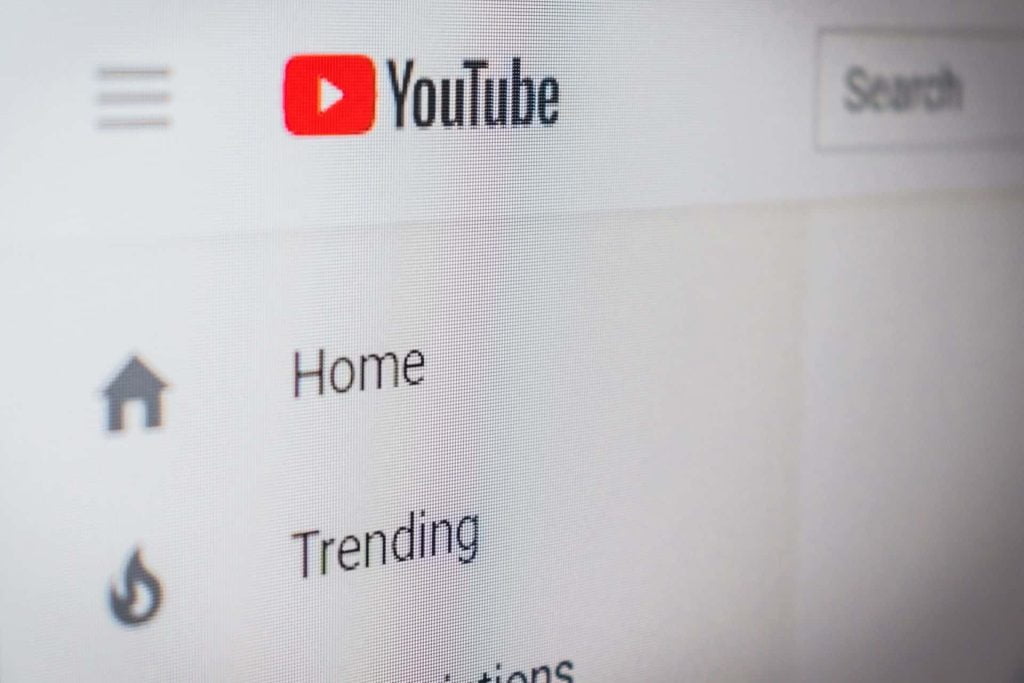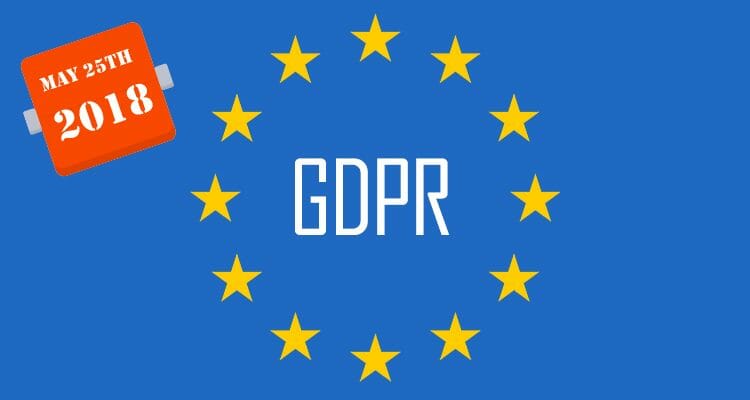Quality Score vs. Click Through Rate (CTR)

Let’s face facts; when it comes to most companies you know, their landing pages have you and other potential viewers like Matt Damon in The Martian. Stranded, directionless, and hoping help comes quickly. And if that’s the case, you can bet that many companies’ ads and keyword campaigns are reflective of the state of their landing page, too! When it comes to your overall marketing efforts, the name of the game is quality. Specifically, your quality score! We’ve gone over the importance of your quality score in regards to your AdWords choices and advertising efforts, but have you ever considered the importance of your quality score related to your click through rating (CTR)? Or vice versa? …Did you know that there even was a relation? It’s okay — that’s literally the reason we’re here. Not only will we delve into why your quality score relates to your overall click-through rating, but will reveal 3 things you can do right now to improve both. Quality, and Quantity So, what exactly is a quality score? By definition, quality score refers to the “quality of ads, keywords, and landing page.” Traditionally a higher quality score leads to lower ad prices (aka saving $$$ on your ad budget for bigger, better things), and better ad positioning on Google’s Search Engine. A high-quality score ensures that Google is doing what it was designed to do: create a great user experience that leads you directly to your search query. Quality scores range from 1-10 and can be determined from the “Keyword Analysis” part of your AdWords account (in a general sense). To increase your quality score, the general guideline is that the more relevant your ads and landing pages are to a user, the higher the likelihood that your keywords match their search query — leading to a higher quality score. Of course, there are a number of other factors leading to a better quality score, including a higher expected click-through rating. Click-Through Ratings For Optimized Landing Page In terms of boosting your quality score, an optimized click-through-rating (CTR) leads to an optimized landing page, and is one of the strongest metrics in doing so. According to Wordstream’s internal studies: “If you look at a plot between CTRs and their respective Quality Scores, you will see the relationship between the two takes on a logarithmic trend rather than a linear one. This means that as click-through rate increases, it has less and less of an impact on your Quality Score. In economics, we call this the law of diminishing returns.” Although a quality score can drastically change over the course of a day, it’s important to know that having an optimized CTR can help to not only mitigate fluctuations but improve your overall score. When the CTR increases for a specific keyword, it’s likely that the quality score will increase respectively. However, a higher average ad position for a keyword without a rise in CTR can either leave quality score unchanged, or lower. Keep in mind that when Google is calculating your quality score, it’s using the expected click-through rating, based on projected rankings for specific keywords! All in all, do your research, since the expected rating differs from the actual click-through rating achieved. Additionally, it’s still possible to have a quite high quality score with a low CTR, due to the fact that Google considers a myriad of factors when it comes to calculations – ad positioning, long-tail keyword usage, ad extensions, etc. Improve CTR, Improve Quality Score! Quick! 2 ways to improve your expected CTR, in the hopes of boosting your quality score and saving you $$$ on ad budgeting (and ensuring your viewers are finding what they’re looking for): Choose low-competition keyword phrases–as you could have guessed, high competition keyword phrases mean that you’re paying more for what’s in high demand, and what the market is saturated with already in terms of keywords. If you’re an electronics retailer, why compete with the keywords that Apple, Dell and other heavy-hitters are using? Go the low-competition route, to ensure that your niche keywords are selected and not competed against for a better return. Think about what the consumer would be searching for, realistically, from their point of view. Optimize your ad copy with keyword phrases–often times we consider the impact of keywords within headlines or sub-headers, but consider loading ad copy with keywords (low-competition ones, ideally) in order to improve CTR and the likelihood of viewers searching your page.
The Difference Between YouTube Keywords vs Google Keywords

YouTube keywords and Google keywords – what exactly makes them different? Google happens to own the two biggest search engines in the world: Google and Youtube. Google has 4.3 billion global users, which accounts for 92.24% of the market share. As of April 2023, YouTube boasts an extensive user base of over 2.527 billion individuals worldwide. So, advertising on these channels would be a no-brainer, but when marketers first start out with ad optimization, they quickly realize Google keywords don’t work the same way on YouTube, and vice versa! The two search platforms have a lot of prominent differences. If you’ve been scratching your head over the difference between how people search for things on YouTube instead of Google, this post will help! YouTube vs. Google: Not the Same Thing The keywords you use for Google ad campaigns and in your organic content should not be the same as the ones you use on YouTube. The reasons for this are simple. #1: They have different functions#2: They motivate different search intent#3: They attract different audiences Here’s an example to show you what we mean: Ernest is an internet-user. He has bookmarks of the online places he visits and is a savvy-enough person to cross-reference businesses and products before purchasing them. When he has to research what to buy, he goes onto trusty Google. Today, Ernest is looking for telescopes. He types into Google, “good amateur telescopes” and “best telescopes.” For a telescope seller like the Canadian Telescope Store, these are keywords that they have chosen to use in their Google Ads. Predictably, their ad pops-up in the search results for Ernest. The same Canadian Telescope Store has also made a brand video on Youtube, promoted using the same keywords from Google. Ernest now has a nice list of models that have been highly recommended on Google by credible sites and experts. He nips over to YouTube to get to the heart of which model to buy. After all, 80% of internet traffic ends up using video search. Does he use the same keywords? No! Instead, he types in specific phrases like ‘Starwatcher 40070 review’ to hear an expert discuss the ins and outs of a model he might buy. Earnest doesn’t look at the Canadian Telescope Store’s branded content. To convert Ernest on YouTube, using the same keywords and ad strategy that they used on Google is pointless. Ernest has moved on, and they have lost a lead! #1: Google & Youtube Keywords Have Different Functions Google is a search engine for the internet, while Youtube is a video search engine. Ernest starts out using Google as always, and does some general research there. He clicks to the Canadian Telescope Store and likes what he sees. But he’s not ready to buy just yet. If the store’s landing page fails to convert Ernest, his search moves to YouTube – a much more dynamic medium for educating and converting buyers – and getting expert advice. Google’s function is to help you find what you’re looking for YouTube’s function is to show you something that educates or entertains you The algorithms on each platform are different. This changes the keywords that should be used on each platform. Ernest uses Google to find the right products, but he uses YouTube to find videos to narrow down his choices. Video teaches more than search does, that’s why it’s more specific. #2: Google & Youtube Keywords Motivate Different Intent The best Youtube keywords will be based on Ernest’s search intent. He now knows what to investigate, and so his intention is to gain a decent context on specific telescopes to make an informed decision about what to buy. He does this using much narrower, much longer keyword terms, or perhaps he navigates to a known channel to hear from a trusted expert in the field. #3: Google & Youtube Keywords Attract Different Audiences YouTube content is meant to entertain. Google content must be entertaining to a degree, but it’s mostly to inform, educate and sell. If an ad is super entertaining, people don’t even care it’s an ad. Two of YouTube’s top 10 videos of 2018 were ads. You better believe they sold a lot of products! YouTube keyword research should be based on what a consumer wants to learn to DO. In this case – product reviews would carry more weight than any YouTube ad with a branded message. And it’s because they will teach the consumer how to buy the best telescope. Audiences on YouTube want to watch and learn. You are far more likely to get through to your audience using content marketing as a storytelling tool. The Canadian Telescope Store should have focused on how to find keywords for a combined ad strategy with content strategy according to SEO keyword insights – or using Google Ads in combination with YouTube content to close the sale with Ernest. So Google is for awareness, while YouTube is really for trust-building, entertainment and closing the deal. If the Canadian Telescope Store had experts online reviewing products for Ernest, chances are – he would buy from them. In the YouTube keywords vs. Google keywords debate, the easiest way to win is to use them together. Different keywords working together will help you target your audiences and make those sales! Check out the advertising institute for more digital resources!
How GDPR Will Impact Your Programmatic Process

GDPR – An Overview: Every few years, the ad tech landscape experiences a level of disruption from technological innovation or policy changes. Editor’s Note: The general data protection regulation (GDPR) has been years in the making and will transform the relationship between publishers and advertisers within the ad tech space. It’s coming into force on May 25th, 2018: is your company compliant? The GDPR is a data protection directive which aims to end the use of unrestricted cookies (or any device identifiers for that matter) while allowing programmatic advertisers to maintain their standards and performance across the digital advertising landscape. Failure to comply with GDPR will result in fines up to 4% of annual global turnover. Essentially, the GDPR ensures that programmatic advertisers are transparent and honest with their creative and ad placement to better align audiences, advertisers, and publishers. Why Now? Considering the recent changes to Facebook’s content ranking system to promote more relevant material for viewers, as well as native advertising’s continuous rise in 2018, you could say trust is the new normal. IAB Europe is reinforcing this trend by enforcing a high level of data protection through the GDPR: the goal is promoting transparency and honesty within programmatic. Traditionally, audience data for programmatic is derived through device tracking (cookie tracking and other methods), coming either from publishers, data brokers, or advertisers. As of May, publishers will be unable to use third-party data from data brokers, advertisers or clients, to help promote transparency within the programmatic field. Additionally, GDPR suppresses the overexposure of inventory pricing information (ie. cost per impression, buyer budgets, etc.) by a third party. All the targeting information shared from here-on-out is consensual and considered first-party data; gone are the days of the “spray and pray” approach of ad placement. Questions to Ask Yourself Are you and your company GDPR compliant? To ensure your GDPR compliance, you must first establish if you are a data controller or a data processor, then delegate your roles and responsibilities accordingly. To achieve compliance, here are a few questions to consider in the context of your business and role within the ad tech ecosystem: Do you have explicit end-user consent? Under GDPR, end-users need information about their data collection and a clearly defined way of opting out. Are you outside the EU? As far as GDPR is concerned, it doesn’t matter – the regulation applies to data processors globally. Are you a data controller or data processor? The prior determines how personal data is processed (as a person or business), while the latter processes the data on behalf of the controller. Controllers are subject to the EU laws and legislation, while processors aren’t directly accountable. How War Room Addresses GDPR Luckily, we’re already in a strong position to adhere to the GDPR’s new legal framework since we’ve always operated with a customer-centric approach. War Room complies with the latest programmatic standards, like OpenRTB 2.4, and format standards like HTML5, VPAID 2.0, and Native Ads API 1.1, to ensure our clients have their brand safety protected, and that our programmatic advertising maintains full-transparency. Are you seeking an update privacy policy? While we’re happy to provide advise, please note that this is not language from our lawyer and is based on research to ensure our clients comply with GDPR compliance. If you want to use this language, we recommend you have your Legal Council review it first. 1. Information We Collect: (a) When you visit our site:You can visit our website without giving away your personal information. We use Analytics and cookies in order to improve our service, user experience and analyze how the website is used. Aside from the approximate location (IP Address), the information collected through our Analytics software is mostly anonymous traffic data including browser information, device information, the frequency of use, and language. Through cookies, we also collect additional information such as your age, gender, and interests. The collected information is used to provide an overview of how people are accessing and using our website, as well as providing marketing services to you. (b) Our Service:We may collect personally identifiable information about you, such as your full name, phone number and email address, when you register for an account. If you choose to purchase a product from us, we or our third-party payment processors will collect your payment information. We also collect data through our partners, by embedding code on our website or mobile applications. When you use our websites or mobile applications, we may receive certain information about you as described above. With this information, we may target you with marketing materials such as service-related ads or emails. If you no longer wish to receive these emails, you may opt out of them by cancelling your account. 2. How We Use Your Information: We use the information that we collect to operate and maintain our website, send you marketing communications, respond to your questions and concerns and to help our partners improve their online offerings. Hope this helps with your new privacy policy. At War Room, we ensure full GDPR compliance for our clients and ensure ads are delivered with the appropriate consent, tracking, and deliverability for maximum success. To find out more about how we can service your programmatic needs and/or establish your GDPR compliance, contact us today.